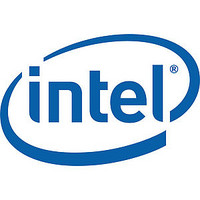lxt384 Intel Corporation, lxt384 Datasheet

lxt384
Manufacturer Part Number
lxt384
Description
Octal T1/e1/j1 Short Haul Transceiver
Manufacturer
Intel Corporation
Datasheet
1.LXT384.pdf
(133 pages)
Available stocks
Company
Part Number
Manufacturer
Quantity
Price
Company:
Part Number:
lxt384BE
Manufacturer:
INTERSIL
Quantity:
1 197
Part Number:
lxt384BE B1
Manufacturer:
INTEL/英特尔
Quantity:
20 000
Company:
Part Number:
lxt384LE
Manufacturer:
Cortina
Quantity:
5 510
Part Number:
lxt384LE
Manufacturer:
LEVELONE
Quantity:
20 000
www.DataSheet4U.com
Intel
PCM Transceiver with Jitter Attenuation
(JA)
Product Features
Applications
Octal T1/E1/J1 Pulse-Code Modulation
(PCM) Transceiver with Jitter Attenuation
for use in both 1.544 Mbps (T1) and 2.048
Mbps (E1) applications
16 fully-independent receiver/transmitters
Support for E1 standards:
Low-power single-rail 3.3-V CMOS power
supply, with 5-V tolerant I/Os
Jitter attenuation
Differential receiver architecture
Intel
— Exceeds ETSI ETS 300 166
— Meets ETS 300 233
— Crystal-less
— Digital clock recovery PLL
— Referenced to a low frequency 1.544
— Can be switched between receive and
— Meets ETSI CTR12/13, ITU G.736,
— Optimized for Synchronous Optical
— Constant throughput delay
— High margin for noise interference
— Operates at >12 dB of cable attenuation
— Eliminates mechanical relays for
— Increases quality of service
SONET/SDH tributary interfaces
Digital cross connects
Public/private switching trunk line interfaces
MHz or 2.048-MHz clock. Normal
operation requires only MCLK. Does
not require a reference clock frequency
higher than the line frequency.
transmit path
G.742, G.823, and AT&T Pub 62411
NETwork (SONET) and Synchronous
Digital Hierarchy (SDH) applications,
meets ITU G.783 mapping jitter standard
redundancy 1+1 protection applications
®
Hitless Protection Switching
®
LXT384 Octal T1/E1/J1 Short-Haul
Transmitters
HDB3, B8ZS, or AMI line encoder/decoder
LOS per ITU G.775, T1.231, and ETS 300
233
Diagnostics:
Intel
interface or 4 wire serial control interface
Hardware and Software control modes
Operating temperature -40 °C to 85 °C
160-ball PBGA or 144-pin LQFP packages
— Power-down mode with fast output
— Transmit waveform shaping meets ITU
— Exceeds ETSI ETS 300 166 transmit
— Low-impedance transmit drivers,
— Low-current transmit output option that
— Can be configured for G.722-compliant,
— Industry-standard P1149.1 JTAG
Microwave transmission systems
M13, E1-E3 MUX
tristate capability
G.703 and T1.102 specifications
return-loss specifications
independent of transmit pattern and
supply-voltage variations
can reduce power dissipation by up to
15%. By changing the LXT384
Transceiver output transformer ratio
from 1:2 to 1:1.7, the savings occur
whether TVCC is at 5 V or 3.3 V.
130 mW per channel (typical). See
Table 63 “Intel
Power Consumption” on page 104
Table 64 “Load
on page
non-intrusive performance (protected)
monitoring points
Boundary Scan test port
®
/ Motorola* 8-bit parallel processor
105.
Revision Date: September 22, 2005
®
3
LXT384 Transceiver
Power Consumption”
Document Number:
Revision Number:
www.DataSheet4U.com
Datasheet
and
248994
004












